Finding love has never been more high-tech!
In 2025, dating apps are smarter, faster, and more engaging than ever, thanks to cutting-edge innovations in AI, blockchain, and immersive experiences.
But behind every swipe, match, and message is a powerful Dating App Tech Stack that makes it all possible.
If you've ever wondered what keeps these apps running so smoothly or why some platforms feel more seamless than others, it all comes down to the tech stack for dating apps.
The right mix of frameworks, databases, and AI-driven tools determines everything from matchmaking accuracy to chat responsiveness.
In this guide, we'll explore the key technologies shaping modern dating apps-so you can see what's driving the future of digital romance!
What is a Dating App Tech Stack?
A dating app tech stack combines programming languages, frameworks, databases, and cloud services that power dating apps, enabling matchmaking, real-time chat, AI-driven recommendations, and seamless user experiences.
A great dating app isn't just about clever icebreakers and catchy bios- it’s built on a rock-solid app tech stack that ensures smooth interactions, secure data, and intelligent matchmaking.
From AI-driven recommendation engines that predict compatibility to real-time chat features that keep conversations flowing, the tech stack for dating apps is the backbone of the entire experience.
Think of it like a digital cupid, using machine learning, cloud computing, and seamless UI frameworks to unite people.
In this section, we'll break down the key technologies that make dating apps tick, helping businesses craft apps that are not just functional but irresistible to users.
Key Components of Dating App Tech Stack
Building a successful dating app requires a well-structured tech stack that ensures seamless user experience, scalability, and security.
From front-end frameworks to backend databases, each component of the tech stack plays a crucial role in the complete dating app development process and ensures a smooth matchmaking experience.
This section'll explore the dating app tech stack and its components, helping you understand the essential technologies needed to develop a high-performance dating platform.
1. Frontend Development: User Interface & Experience
-
- Frameworks & Languages: React Native, Flutter, Swift (iOS), Kotlin (Android)
- UI/UX Design Tools: Figma, Adobe XD, Sketch
- Key Features: Intuitive navigation, profile creation, and interactive swipe gestures
2. Backend Development: Core Functionality & Data Processing
-
- Programming Languages: Node.js, Python (Django/Flask), Ruby on Rails
- Frameworks: Express.js, Spring Boot, Laravel
- Key Features: User authentication, matchmaking algorithms, notifications
3. Database Management: Storing & Organizing User Data
-
- SQL Databases: PostgreSQL, MySQL (for structured data)
- NoSQL Databases: MongoDB, Firebase (for flexibility & scalability)
- Key Features: Profile data storage, chat history, preferences
4. APIs & Third-Party Integrations: Enhancing Features
-
- Geolocation APIs: Google Maps, Mapbox (for location-based matching)
- Social Login APIs: Facebook, Google, Apple Sign-In (for quick authentication)
- Messaging APIs: Twilio, SendBird, Firebase (for real-time chats)
5. Hosting & Cloud Infrastructure: Ensuring Performance & Scalability
-
- Cloud Providers: AWS, Google Cloud, Microsoft Azure
- Storage Solutions: Amazon S3, Firebase Storage (for media & user data)
- Key Features: Auto-scaling, CDN for faster performance
6. Security & Privacy Measures: Protecting User Data
-
- Data Encryption: SSL/TLS, AES Encryption
- Fraud Prevention: AI-based identity verification, CAPTCHA, KYC compliance
- Key Features: End-to-end encrypted chats, privacy controls
7. Payment Gateway Integration: Monetization & Premium Features
-
- Popular Payment Providers: Stripe, PayPal, Razorpay
- Subscription Models: In-app purchases (Google Play, Apple Pay)
- Key Features: Secure transactions, multi-currency support
Importance of Dating App Tech Stack
The foundation of every successful dating app lies in its technology stack.
A carefully chosen dating app tech stack ensures smooth performance, security, and scalability, allowing users to connect, chat, and match without technical hiccups seamlessly.
A well-chosen technology stack for dating apps supports seamless matchmaking and helps overcome development challenges in dating apps such as data security, real-time interactions, and user retention.
Below are the key reasons why selecting the best tech stack for dating apps is crucial for long-term success.
1] Ensure Seamless User Experience
A well-planned dating app design goes beyond visuals- it ensures intuitive navigation, fast load times, and engaging interactions. Users expect instant swipes, real-time messaging, and smooth profile browsing- and that's only possible with an optimized dating app technology stack.
-
- Frontend frameworks like React Native and Flutter create fluid and intuitive user interfaces.
- Backend technologies like Node.js and Django ensure quick request handling.
- High-performance databases like PostgreSQL and MongoDB enable fast data retrieval, reducing wait times.
A well-structured dating app tech stack ensures that users stay engaged, leading to higher retention rates and positive app reviews.
2] Focus on Scalability
As your dating app grows, so does the volume of user interactions, messages, and profile searches.
Without a scalable technology stack for dating apps, performance issues may arise, leading to crashes and frustrated users.
-
- Cloud hosting solutions (AWS, Google Cloud, Azure) enable auto-scaling to handle increased traffic.
- Load balancing distributes user requests efficiently, preventing slowdowns.
- Caching tools like Redis and Memcached reduce database load and speed up data access.
By investing in a robust dating app tech stack, businesses can handle millions of users effortlessly, ensuring long-term growth.
3] Ensure Security & User Privacy
With the rise of data breaches and identity fraud, ensuring top-notch security is critical for any dating app technology stack.
Users share personal details, private messages, and payment data, making security a non-negotiable priority.
For example, developers looking to create a transgender app, robust privacy controls, and inclusive design are non-negotiable to foster a safe and welcoming environment.
-
- End-to-end encryption (SSL/TLS) secures all user communications.
- AI-powered fraud detection identifies fake profiles and suspicious activity.
- OAuth, biometric login, and multi-factor authentication (MFA) add extra security layers.
By implementing a secure technology stack for dating apps, businesses can gain user trust and comply with data privacy regulations like GDPR and CCPA.
4] AI-Powered Matchmaking & Personalized User Experience
The future of online dating lies in AI. The right dating app tech stack enables intelligent user behavior analysis, improving match accuracy and engagement.
-
- Machine learning models analyze user preferences and interactions to suggest better matches.
- Sentiment analysis tools understand user emotions, helping refine recommendations.
- Chatbots and AI dating coaches enhance engagement by guiding users in conversations.
The integration of AI-driven matchmaking ensures that users find compatible matches, boosting retention and app success.
5] Real-Time Communication & Interactive Features
Modern dating apps are evolving beyond just swiping and chatting. Users expect video calls, voice messages, and interactive engagement, which requires a strong technology stack for dating apps.
-
- WebRTC enables real-time video and voice calling within the app.
- Push notifications keep users engaged with updates and new matches.
- Live streaming & interactive dating games enhance user experience.
By integrating cutting-edge dating app features, businesses can increase user engagement and differentiate themselves in the market.
6] Monetization: Seamless Payment Processing & Revenue Growth
A strategic monetization plan is crucial for the success of any dating app. The right dating app tech stack ensures smooth transactions for subscriptions, in-app purchases, and ad integrations.
-
- Secure payment gateways (Stripe, PayPal, Apple Pay, Google Pay) provide smooth transactions.
- AI-powered dynamic pricing models personalize subscription offers based on user behavior.
- Non-intrusive ad integrations (Google Ads, Facebook Audience Network) generate additional revenue.
With a well-planned technology stack for dating apps, businesses can maximize revenue streams while maintaining a seamless user experience.
7] Future-Proofing Your Dating App
The online dating industry is rapidly evolving, and staying ahead of trends in dating apps requires a flexible and future-proof technology stack of dating apps. As user expectations grow, businesses must adopt cutting-edge technologies to stay competitive and relevant.
-
- AI-driven moderation tools help detect inappropriate content and improve community safety.
- Voice-first interactions are gaining popularity, & innovative app ideas like AI-virtual speed dating are reshaping user expectations.
- Hyper-personalized experiences using AI allow dating apps to suggest matches based on deep behavioral insights.
- Edge computing enhances app performance by reducing latency, ensuring real-time interactions.
Tips to Choose the Right Dating App Tech Stack
Thinking about starting an online dating business or improving an existing platform, the technology decisions you make today will determine your app's success tomorrow.
So, how do you choose the right tech stack for mobile dating apps without getting stuck with something that slows down performance or limits future growth?
Here are essential tips to help you choose the correct technology stack for an online dating app!
1. Prioritize Performance & Speed
No one wants a dating app that takes forever to load.
In an industry where instant interactions matter, even a few seconds of delay can make users abandon your app.
To ensure a smooth user experience, opt for lightweight front-end frameworks like React Native or Flutter and high-performance backend technologies like Node.js or Django.
Additionally, caching mechanisms like Redis help speed up database queries, reducing response times.
A snappy, lag-free experience ensures users stay engaged and keep coming back for more.
2. Focus on Scalability
What happens when your app goes viral and suddenly gets millions of users overnight? A poor tech stack can cause crashes, lag, and frustrated users.
To choose the right tech stack for dating apps, go for cloud-based solutions like AWS, Google Cloud, or Azure, which offer auto-scaling capabilities.
Load balancing and containerized environments like Docker and Kubernetes further help manage high traffic efficiently.
With a scalable architecture, your dating app remains smooth and reliable, even as your user base expands exponentially.
3. Prioritize Security & Privacy
Dating apps deal with sensitive user data, from personal bios to private conversations. Security breaches or leaks can destroy trust and ruin your app's reputation.
Implement end-to-end encryption (SSL/TLS), OAuth authentication, and AI-driven fraud detection to protect users.
Two-factor authentication (2FA) and biometric login further enhance security. Additionally, ensure compliance with GDPR and other data protection laws.
When picking the correct technology stack for an online dating app, robust security measures should be a top priority to create a safe and trusted environment for users.
4. Opt for AI-Powered Matchmaking
Generic swiping is old news- users now expect smart, AI-driven matchmaking that suggests matches based on their preferences and behaviors.
Machine learning models analyze user interactions, profile activity, and sentiment in conversations to recommend the best matches.
Tools like TensorFlow and OpenAI models allow you to build algorithms that continuously learn and improve matching accuracy.
However, integrating AI-driven features comes at a cost. The cost to create a dating app with advanced AI capabilities varies.
With AI-powered matchmaking, you not only enhance the user experience but also differentiate your app from competitors, keeping users engaged and increasing retention rates.
5. Choose the Right Database for User Profiles
Every dating app must efficiently store and retrieve massive amounts of data, including user profiles, matches, messages, and activity logs.
Choosing the right database structure is critical for fast performance and scalability.
SQL databases (like PostgreSQL) are great for structured data, while NoSQL options (like MongoDB) handle large-scale unstructured data well.
A hybrid approach, using both SQL and NoSQL, offers the best of both worlds, ensuring quick data retrieval and efficient storage.
A well-optimized database prevents lag, crashes, and frustrating user experiences.
6. Use WebRTC for Real-Time Communication
Want to make your dating app more interactive with video chats, voice calls, and live streaming? WebRTC is the go-to technology for real-time communication, allowing seamless peer-to-peer video and audio interactions.
Unlike traditional VoIP systems, WebRTC reduces latency, ensures high-quality calls, and improves security.
Many top dating apps now offer video-first experiences, making WebRTC a must-have.
A well-integrated real-time chat system keeps users engaged and increases app retention rates, because sometimes, a face-to-face conversation says more than just a text.
7. Ensure a Seamless Multi-Platform Experience
A dating app should work flawlessly on both iOS and Android, without requiring separate development efforts.
Choosing cross-platform frameworks like Flutter or React Native allows developers to write a single codebase for both platforms, saving time and costs.
These frameworks offer native-like performance, ensuring smooth animations, fast loading speeds, and an intuitive interface.
Additionally, Progressive Web Apps (PWAs) are gaining traction, allowing users to access dating apps via a web browser without installing them.
A multi-platform approach expands your reach and maximizes user acquisition.
8. Leverage APIs for Extra Features
Why build features from scratch when APIs can do the job?
Whether you're trying new dating app ideas or scaling an existing platform, APIs let you quickly add geolocation matching, payment gateways, and AI chatbots.
Adding geolocation-based matching, payment gateways, AI chatbots, and identity verification can be done efficiently using third-party APIs.
Google Maps API helps users find potential matches nearby, while Stripe and PayPal APIs handle secure transactions for premium subscriptions.
AI-powered chatbots can improve engagement by assisting users in creating profiles or starting conversations.
By integrating APIs smartly, you can enhance app features without unnecessary development overhead.
How Can JPLoft Help You With the Right Dating App Tech Stack?
In this time of digital romance, your dating app's tech stack isn't just infrastructure-it's the secret sauce behind every swipe, match, and meaningful connection.
As a leading dating app development company, JPLoft brings expertise in selecting the perfect technology stack for dating apps tailored to your needs.
Our team analyzes your app's scalability, security, and performance requirements to recommend the best frameworks, databases, and cloud solutions.
Whether you need AI-driven matchmaking, real-time chat, or cross-platform compatibility, we ensure your tech stack aligns with your business goals.
With JPLoft, you get a future-proof architecture that enhances user experience while optimizing development costs.
Conclusion
Choosing the right technology stack for dating apps is crucial for performance, scalability, and security.
From frontend frameworks to backend infrastructure, each component impacts user experience and long-term success.
By prioritizing AI, real-time features, and robust databases, you can create a seamless dating platform. Partnering with an expert company ensures you make informed decisions for a competitive edge.
Whether launching a new app or upgrading an existing one, the right technology stack for dating apps will drive engagement, retention, and growth in the evolving digital dating landscape.
FAQs
A dating app tech stack combines programming languages, frameworks, databases, and tools used to build an application's frontend and backend components.
Tinder primarily uses Node.js for its backend, React Native for cross-platform mobile development, and MongoDB for its database, with AWS for cloud infrastructure.
AI is crucial for personalized matchmaking, fraud detection, and enhancing user engagement through smart recommendations and chatbots.
Cross-platform frameworks like Flutter or React Native offer cost-effective development while delivering near-native performance for most dating app needs.
End-to-end encryption, biometric authentication, and AI-powered fraud detection are essential security layers for protecting user data in dating apps.





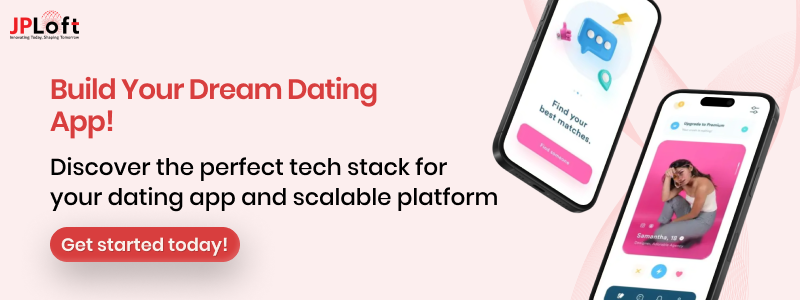
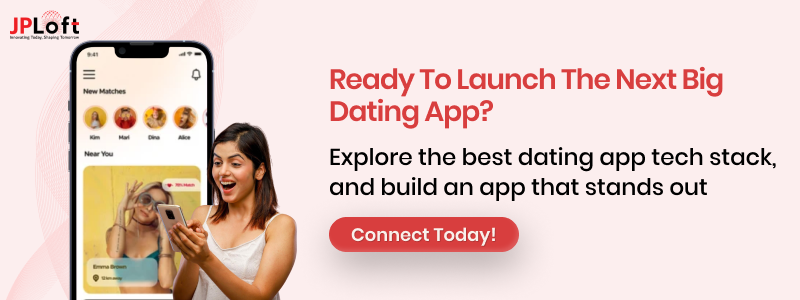

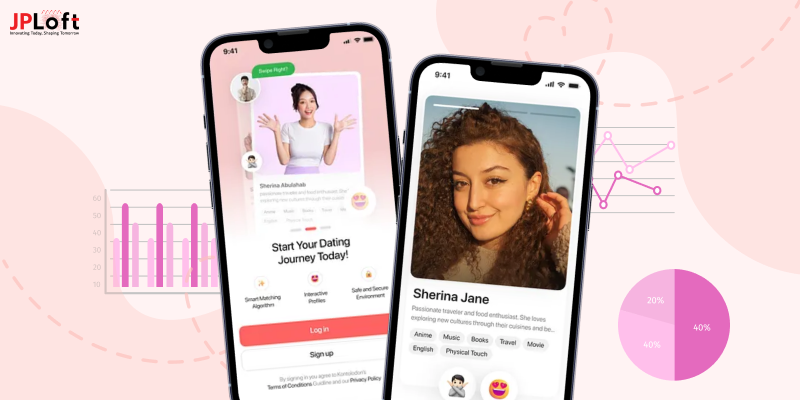
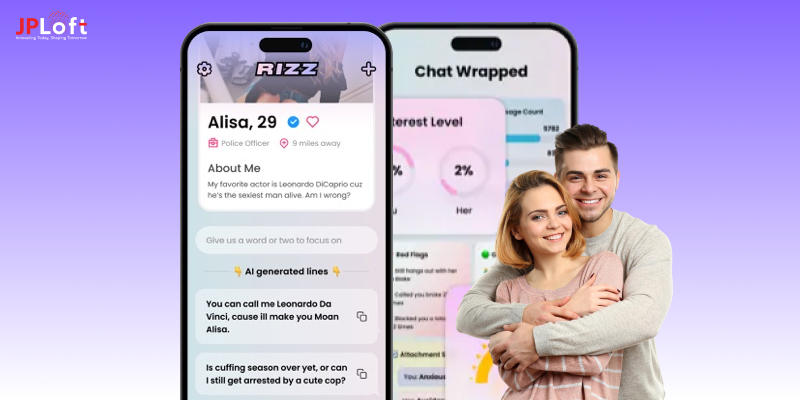
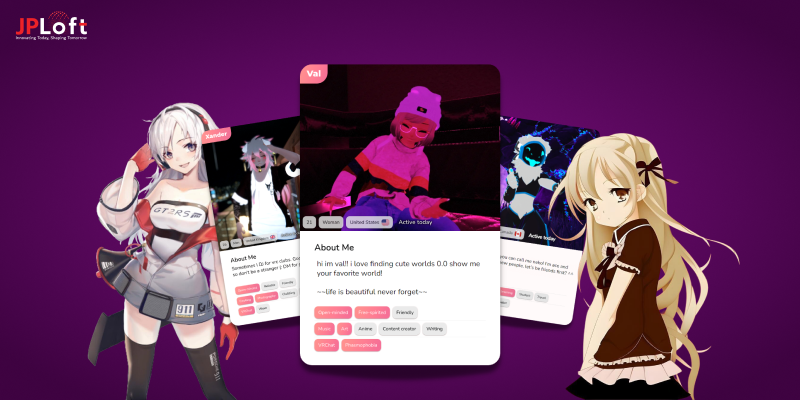



Share this blog